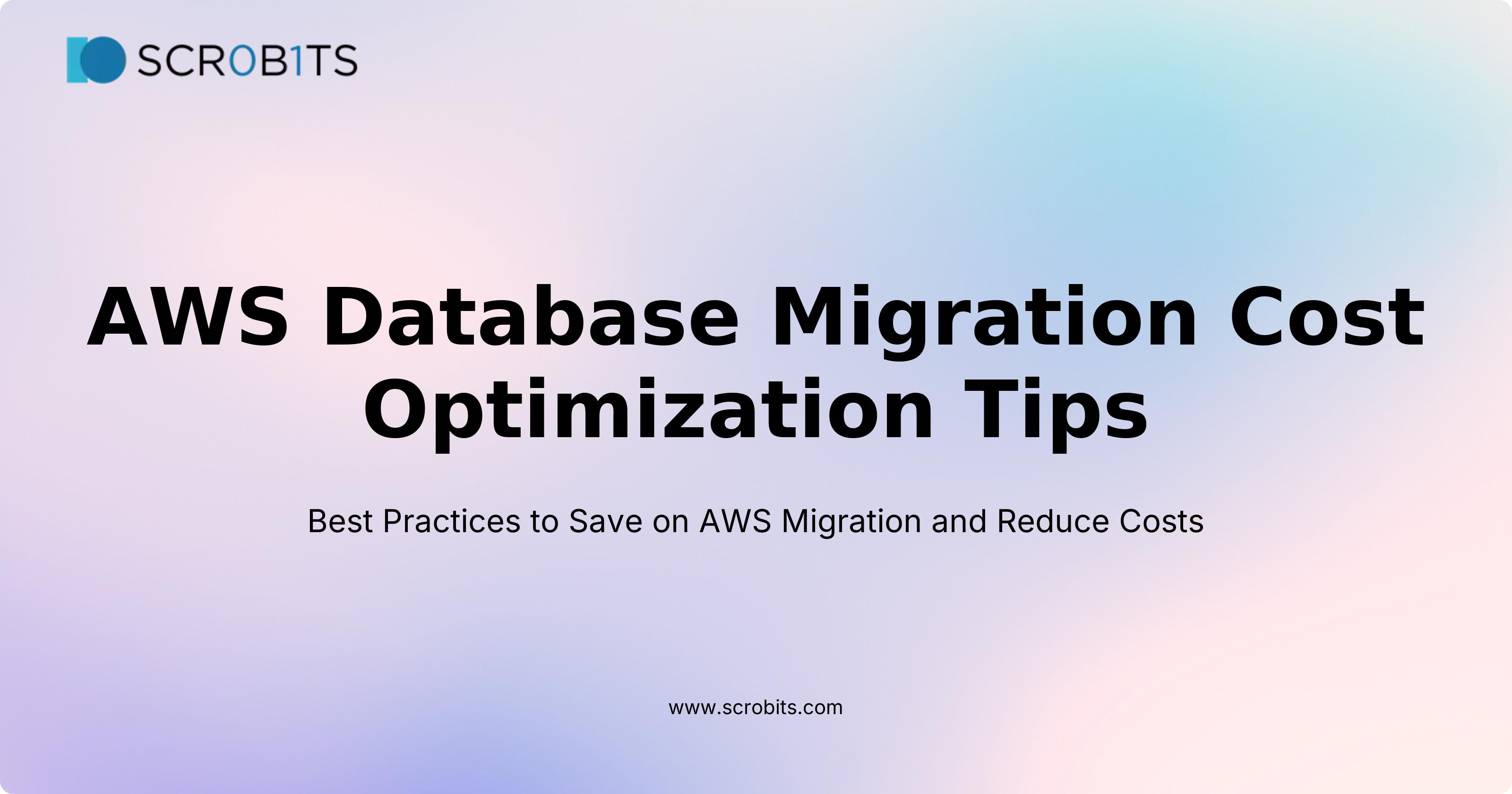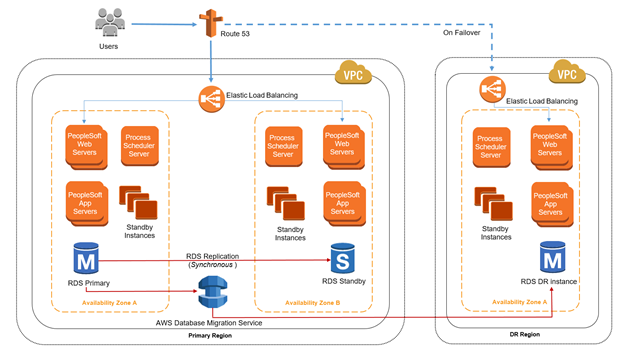AWS Database Migration Cost Optimization Tips
 Arpit Shrivastava
Arpit Shrivastava
Introduction to AWS Migration Cost Management
Migrating to the cloud can really change the game for many businesses, but keeping an eye on costs is crucial.
You might wonder how to keep your AWS move budget-friendly.
AWS lets you take control of your spending while creating modern applications that fit just right.
With plenty of services and pricing options, AWS makes cost management easy without cutting down on performance.
Think of it as having the freedom to scale up or down as you need, minus any cost surprises.
That's AWS magic in action!
Whether you’re running a startup or managing a big enterprise, AWS has something for everyone. Sounds like a plan, right?

Importance of Cost Optimization
So, what's the big deal with cost optimization on AWS? It’s about making sure every cent counts and matches your business needs.
AWS helps you get the most out of what you spend while keeping costs low. This way, you only pay for what you really need.
Let me share something personal here. I used to think cost optimization was just about cutting expenses.
But it’s really about spending smartly. It’s about spotting wasteful habits and replacing them with better solutions that save money. Why aim for anything less?
Adding these strategies to your AWS migration could totally change how you handle cloud costs. This lets you focus on growth and innovation.
Efficient cost management is key during an AWS Database Migration.
The goal? No nasty financial surprises. Let’s jump right into a few tips and tricks I've picked up along the way.
Analyze AWS Storage Solutions
Choosing the right AWS storage is a game changer. Amazon Glacier is your go-to for long-term archival. It’s budget-friendly.
Though it’s pricier to retrieve data, it’s perfect for infrequent access. It keeps costs in check without sacrificing access when you really need it.
Use AWS Cost Management Tools
One of the best tools in our migration arsenal? AWS Cost Explorer. Picture this: an easy-to-use interface that helps you see, grasp, and manage your AWS costs over time.
Don’t skip this tool during your migration.
It’s crucial for doing cost-benefit analyses. It keeps your decisions financially sound. The best part? Its simplicity. It offers clear spending insights.
No complex jargon to decode.
Plan Your Migration Budget Effectively
Estimating costs can feel like staring into a mysterious crystal ball. But with some strategy, it gets easier.
Start by checking your current infrastructure costs. What are you spending today? How does that stack up against future needs?
Next, think about data transfer, licensing, and support expenses. And keep an eye on hidden costs like training. They can pop up unexpectedly.
This calculated planning keeps your expenses minimal. Plus, it aligns with your business goals, keeping your migration smooth.

Understanding AWS storage solutions, using cost management tools, and planning your budget wisely can save you stress and cash.
These practices keep you informed and in charge of your financial ecosystem.
Cutting down costs during your AWS database migration can make a huge difference.
Let's dive into some effective strategies. We'll harness automation, manage service expenses, and make the most of cost-effective AWS services to boost our savings.
Leverage Automation for Savings
In my journey of migrating databases to AWS, one lesson stood out: automation is a must-have. Automating routine tasks can greatly reduce your AWS database expenses.
By implementing AWS database cost optimization techniques into these processes, you can avoid unnecessary manual steps. This often leads to significant savings in both time and resources.
Always think about factors like compute, storage, and data transfer. These are key drivers of cost in the AWS cloud.
By understanding these elements, you can plan your resource usage strategically, resulting in optimized costs during your AWS database migration.
Service-Based Cost Control
Once, I noticed my budget was slipping away because I wasn't managing my resources actively.
That's when I discovered AWS Budgets—a real game-changer for financial planning. It allows me to monitor my AWS costs and utilization metrics for Reserved Instances or Savings Plans.
Keeping an eye on these helps us avoid unexpected expenses. It's vital to watch our spending, especially during busy times like migrations.
Utilize Cost-Effective AWS Services
Cutting costs on AWS S3 during migrations is another area to focus on. Don't forget the AWS Cost Explorer.
This handy tool offers practical tips and recommendations to further cut down expenses.
When migrating a large chunk of data—say, from an S3 bucket to an EFS file system—AWS DataSync is incredibly helpful. With tools like these, we can save a lot without sacrificing performance or reliability.

Wrapping up, understanding AWS database migration costs can truly strengthen your budget.
Let's revisit our key cost-saving strategies. AWS offers a variety of pricing plans.
From consolidation to right-sizing, you have plenty of opportunities to manage costs.
Using tools like AWS Cost Explorer, AWS Budgets, and Trusted Advisor, you can track and manage costs.
These tools are great for spotting underutilized resources.
They help you identify where you can resize or cut resources, boosting cost efficiency.
If you're investing in storage, Amazon S3 is your friend. It has features to organize and manage data effectively.
Its lifecycle management helps you cut costs based on how often you access the data.
Looking to the future, planning and forecasting are crucial. Understanding AWS migration costs is essential.
There are different methods for cost-effective AWS resource usage, like scheduling shutdowns or using reserved and spot instances. Balancing immediate needs with long-term plans ensures you save money over time.
Following these steps not only optimizes current workloads but also sets a strong financial base for future cloud endeavours.
Remember, saving money with AWS means you have more to spend on innovation and growth.
References
Subscribe to my newsletter
Read articles from Arpit Shrivastava directly inside your inbox. Subscribe to the newsletter, and don't miss out.
Written by

Arpit Shrivastava
Arpit Shrivastava
I'm Arpit, Co-Founder of ScroBits. I love talking about IoT, SaaS and Cloud DevOps. We make IT outsourcing fun and effective with our MERN stack expertise. When not in the tech world, I enjoy plogging, mountaineering, and working out. Ready to transform your business? Let's chat and make tech magic happen.